Horse’s Hoof Fungus/ All Year Round / Inedible
Enter a realm of natural resilience as we explore the intriguing features and uses of the inedible Horsehoof Fungus (Fomes fomentarius).
Join us on a journey where functionality and artistic allure intersect. With its distinctive hoof-shaped appearance and tough, woody texture, the Horse’s Hoof Fungus stands as a testament to nature’s sculptural craftsmanship.
Learn to identify its unique features, discover its preferred habitats, and delve into the practical applications it offers. While not suitable for consumption, this fungus has been historically valued for its medicinal, fire-starting, and craft-related uses. Embrace the multifaceted wonders of the natural world as we celebrate the resilience and versatility of the Horse’s Hoof Fungus. Get ready to be inspired by its utilitarian capabilities and the artistic possibilities it presents, reminding us of the intricate wonders nature holds.
Scientific Name
Fomes Fomentarius
Common Names
Horse’s Hoof fungus, Tinder Fungus, Tinder Bracket, Iceman Fungus.
Family
Polyporaceae
Habitat
They are most often found on dead wood, logs and stumps, but they do sometimes appear on older living trees. Mostly they grow on birch but they do sometimes attack beech and sycamore.
Description
A common fungus found all year round. They are tough and woody to touch, they are perennial and often persist for many years. Non-toxic but classed as inedible due to their bitter taste and tough texture.
Identifying Features for horsehoof fungus:
Cap:
They are typically hoof shaped but can sometimes be more shelf like in overall appearance, they have broad, concentric ridges. The colour of the upper surface can range from a silvery grey to an almost pure black colour, they do look like a horse’s hoof, hence their common name.
The underside is much lighter in colour, almost cream to white when young and may bruise light brown when damaged.
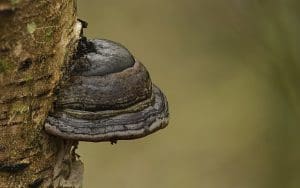
Stem:
No real stem.
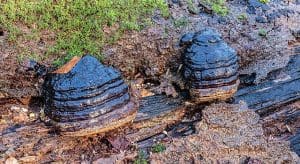
Gills:
Pores instead of gills, which are almost white when very young but darken to brown with age.
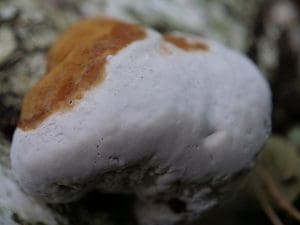
Smell:
Quite fruity.
Spores:
Pale lemon. Often found covering either the tree below the mushroom or other mushrooms below.
Uses
In food
Not really edible, their tough texture is unpleasant and their taste is acrid.
Harvesting
They are harvested for use as tinder, known as amadou. Amadou has been used for thousands of years as a fire starter, when dried it easily takes a spark. It can also be used medicinally or as a textile and would have been a valuable resource for our ancestors.
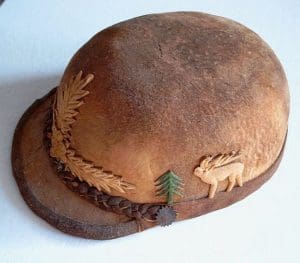
Known hazards
None known.
Potential lookalikes
They could be confused with the Artist Bracket (Ganoderma Applanatum) but this has brown spores. Possibly the Birch Polypore (Fomitopsis Betulina) could also look similar but these tend to be a lot softer in texture and they have a smoother upper surface.
Extra Notes
The Horse’s Hoof fungus is one of the fungi that was found with Otzi the Iceman, a 5000-year-old body found preserved in the Alps between Austria and Italy. It is believed he was using the fungus as a firelighter.
1 reply on “Horsehoof Fungus (Fomes Fomentarius) Identification”
Leave a Reply
You must be logged in to post a comment.



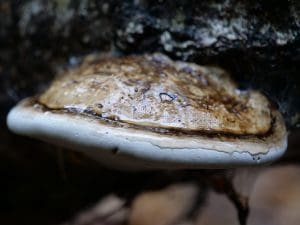



Thank you for sharing, Knowledge is important.
I live in northern Maine, we are very fortunate to have a very large variety were we live.